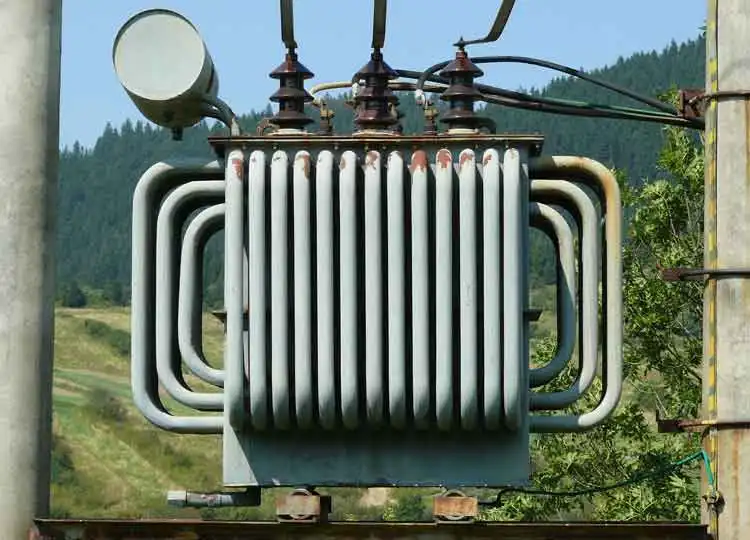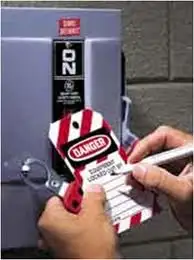Transformer Core Explained
By R.W. Hurst, Editor

Power Transformer Maintenance Training
Our customized live online or in‑person group training can be delivered to your staff at your location.

- Live Online
- 12 hours Instructor-led
- Group Training Available
Download Our OSHA 3075 Fact Sheet – Understanding Electrical Hazards in the Workplace

- Learn the effects of electric current on the human body
- Understand OSHA safety standards and protective devices
- Discover essential lockout/tagout and grounding practices
Transformer core design uses laminated silicon steel or ferrite to guide magnetic flux, reduce hysteresis and eddy-current losses, control permeability and saturation, and optimize inductance in power transformers, EI, toroidal, and C-core types.
What Is a Transformer Core?
A magnetic path of laminated steel or ferrite that guides flux, minimizes losses, and sets inductance in transformers.
✅ Reduces hysteresis and eddy-current losses via lamination
✅ Material choice (silicon steel, ferrite) sets permeability
✅ Shapes (EI, toroidal, C-core) optimize flux and leakage
The transformer core is the magnetic pathway that guides the magnetic flux generated by the primary winding to the secondary winding. This flux linkage is crucial for inducing voltage in the secondary coil, enabling the transformer to step up or step down voltage levels. For context, knowing which winding is considered the primary helps explain how the core directs flux between coils effectively.
Function of a Transformer Core
The primary function of a transformer core is to provide a low-reluctance path for the magnetic field created by the primary and secondary windings. This magnetic coupling facilitates the transfer of energy from the primary winding to the secondary winding, enabling voltage transformation. By concentrating the magnetic flux, the core minimizes energy loss and enhances the efficiency of the transformer. In practice, the core works alongside other key transformer components to maintain tight magnetic coupling and dependable efficiency.
The core serves several vital functions in a transformer:
- Magnetic Flux Concentration: It concentrates the magnetic flux produced by the primary winding, ensuring that most of it links with the secondary winding. This maximizes the efficiency of energy transfer and reduces leakage flux, which can cause energy losses.
- Reduction of Core Losses: The core material and design are optimized to minimize power losses due to hysteresis and eddy currents. Hysteresis loss occurs due to the magnetization and demagnetization cycle of the core material, while eddy currents are circulating currents induced within the core by the changing magnetic field.
The degree of coupling also depends on the geometry of each transformer coil and its placement on the core limbs for minimized leakage.
FREE EF Electrical Training Catalog
Download our FREE Electrical Training Catalog and explore a full range of expert-led electrical training courses.

- Live online and in-person courses available
- Real-time instruction with Q&A from industry experts
- Flexible scheduling for your convenience
Materials Used for Transformer Cores
The most common material used for transformer cores is silicon steel. This material offers high permeability, allowing for efficient magnetic flux flow, and low hysteresis loss. Thin laminated sheets of silicon steel are used to reduce eddy current losses. Other materials, such as amorphous metal and ferrite, may be used in specific applications where their unique properties are advantageous. Material choice is tightly connected to the broader construction of a transformer where lamination thickness, stacking factor, and clamping influence core losses.
Common materials used for transformer cores include:
- Silicon Steel: Silicon steel is widely used due to its high permeability and low hysteresis loss. The addition of silicon to the steel reduces its electrical conductivity, thus reducing eddy current losses.
- Amorphous Steel: Known for its low energy loss, amorphous steel is used in high-efficiency transformers. Its non-crystalline structure significantly reduces hysteresis and eddy current losses.
- Ferrite: Ferrite cores are used in high-frequency applications due to their high magnetic permeability and low core losses.
Why Laminate the Core?
Laminating a transformer core involves stacking thin laminated sheets of steel to form the core. This design reduces eddy current losses by confining the eddy currents to smaller paths within each lamination, thereby minimizing energy loss. Additionally, laminating the core helps reduce hysteresis loss, as the thin sheets provide better alignment of the magnetic domains within the core material. Selecting lamination grade and insulation coatings is part of holistic transformer design that balances loss, noise, and thermal performance.
What are the Different Types of Transformer Core Constructions?
There are several types of transformer core constructions, each with unique characteristics:
- Laminated Core: This is the most common type, using thin laminated sheets of silicon steel to reduce eddy current and hysteresis losses. It is widely used in both power and distribution transformers.
- Toroidal Cores: These cores are donut-shaped and provide excellent magnetic coupling, reducing leakage flux and energy losses. They are used in applications requiring high efficiency and compact size.
- Shell Type Cores: In shell type transformers, the windings surround the core, providing a robust mechanical structure and reducing magnetic leakage. This design is suitable for high-voltage and high-power applications.
These construction choices often differ between power transformers and smaller distribution units due to differing voltage classes and load profiles.
Types of Transformer Core Constructions
Several core designs are commonly used in transformers:
- Core Type: In this design, the windings surround the core limbs. This configuration is often used in smaller transformers.
- Shell Type: The windings are surrounded by the core in shell type cores. This design is commonly used in larger power transformers.
- Toroidal Cores: These cores are ring-shaped and offer advantages in terms of compactness and lower leakage flux.
The Significance of Core Saturation
Core saturation is a phenomenon where the core material reaches its maximum magnetic flux density. Beyond this point, further increases in the magnetizing current do not result in a proportional increase in flux density. This can lead to increased losses, distortion of the output waveform, and even overheating. Transformer designs carefully consider core saturation to ensure optimal performance and reliability within their intended operating range. In high-voltage applications, understanding saturation behavior is essential to the operation of power transformers explained in practical guides where protective margins prevent distortion.
The transformer core is essential in determining a transformer's efficiency and performance. By using high permeability materials like silicon steel and implementing core designs such as laminated, toroidal, and shell type cores, transformers can minimize energy losses and improve magnetic coupling. Laminating the core is a critical step in reducing eddy current and hysteresis losses, ensuring the transformer's longevity and efficiency. Understanding the significance of core saturation helps in designing transformers that operate safely within their magnetic limits. These insights into transformer core construction and materials are vital for optimizing transformer performance in various electrical applications.
Sign Up for Electricity Forum’s Utility Transformers Newsletter
Stay informed with our FREE Utility Transformers Newsletter — get the latest news, breakthrough technologies, and expert insights, delivered straight to your inbox.







